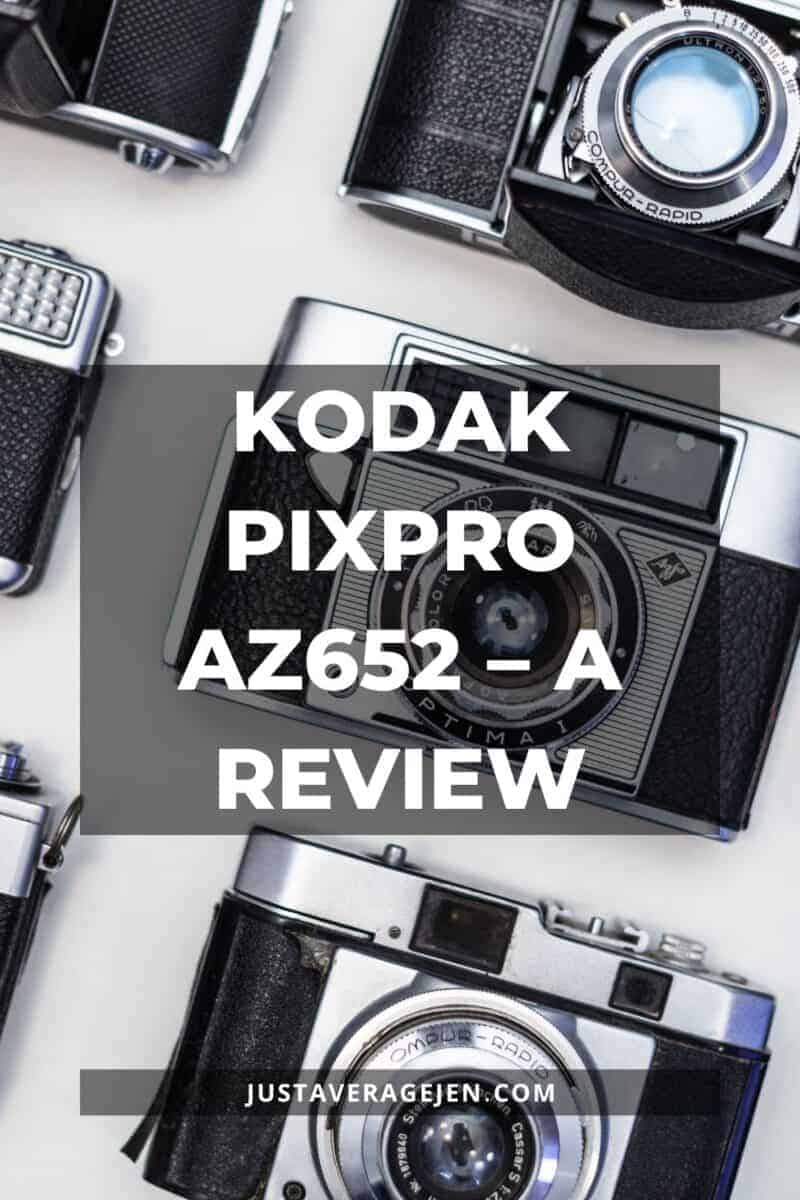Kodak Pixpro AZ652 – A review
Since I started blogging I have mostly used my mobile phone for my photography. I know a camera is better in many ways but I just never could justify the cost when I wasn’t sure what to get or how much better I would find it.
When Kodak asked me to review their Kodak Pixpro AZ652 I must say I was so excited. It looks great and the description sounded brilliant so I couldn’t wait to try it out.
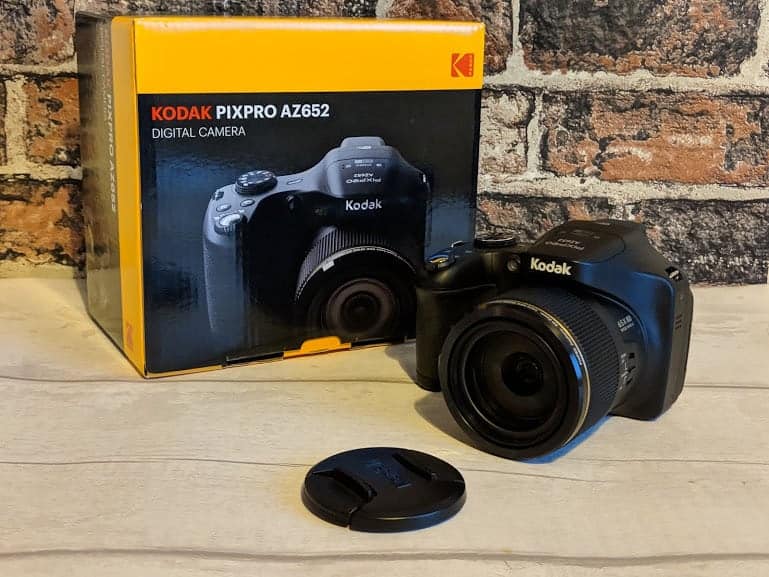
If like me, you are a bit unsure what to look for in a camera but want something a bit better than the standard point-and-shoot digital cameras then this may be the one for you.
With an RRP of £349.99, it is not as expensive as many cameras out there but gives the good quality of Kodak in a perfect bridge camera which could well be what you need.
The bonus is that this is currently available for just £256.13 on Amazon. That is almost £100 off so if that doesn’t tempt you then read on to see what I think of it and if it is the camera for you.
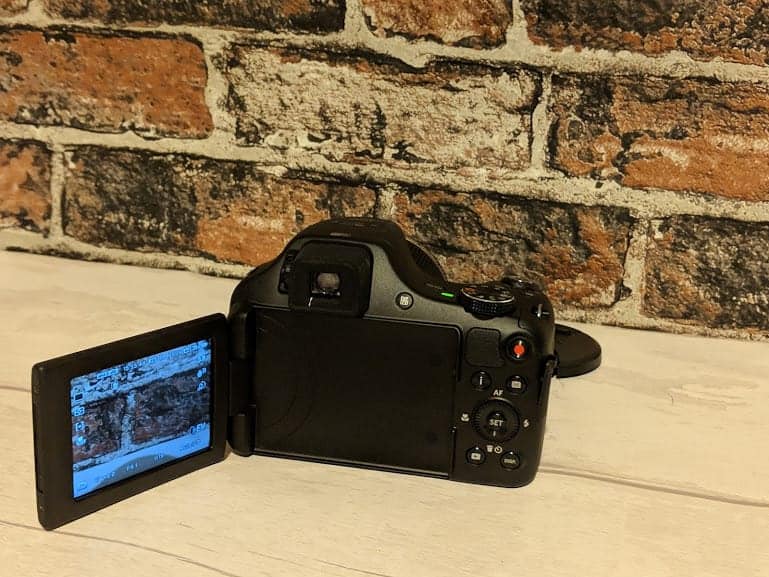
What is a bridge camera?
Think of a bridge camera as a bit of an in-between between a basic point-and-shoot compact camera and a DSLR camera.
A bridge camera does not have removable and interchangeable lenses. It has plenty of manual controls and unless you are a real photography genius it could well be all you actually need. It helps to make good photography easy.
If you have a passion for photography but you’re not quite seeing that in photos from your phone and you’re not ready to step up to a DSLR then this could be for you.
Why the Kodak Pixpro AZ652?
Kodak is a brand that is well known for photography so knowing this I knew that the camera would be great.
There are so many features to the camera that I can’t possibly list them all but what I can say is that it was really easy to set up and use.
It has 65x Optical Zoom which is pretty good as it means you can photograph things at distance quite clearly.
Generally, a standard point-and-click camera or a mobile phone camera has a digital zoom of maybe 10x so already you can see the amazing power this camera has.
The Kodak Pixpro AZ652 can also record videos in full HD which I thought was pretty cool because so many memories are better in HD video than photographs aren’t they?
The fact that it is an all-in-one device makes it easy to change too. I recently took it to my brother and sister-in-law’s wedding and was very impressed with the photo quality. I might make a calendar with pictures I took.
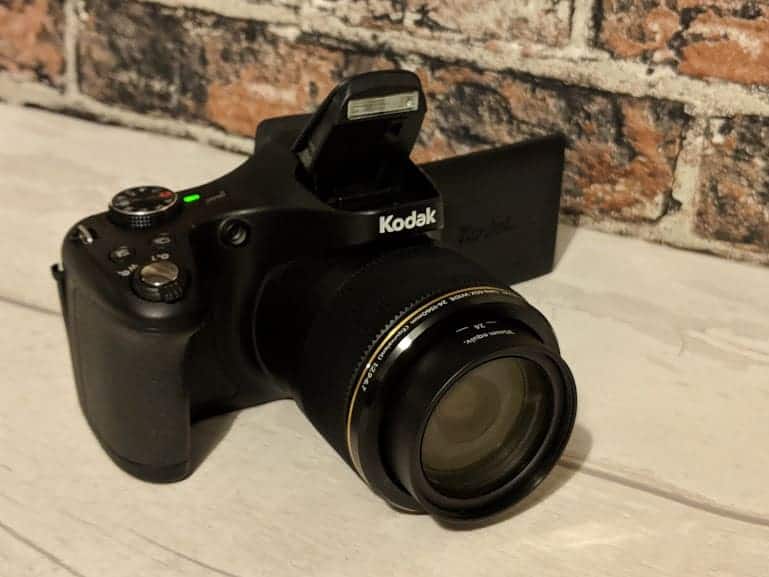
Build Quality
I found the camera comfortable and easy to hold, very robust and clearly well-made. Everything I need in a camera is here in AZ652.
It feels the part and looks the part. There is no reason I think I will ever need to change it as it feels well-made and as it will last well.
Saving your photos
Whilst you can still use a wire to transfer all your photos over to your computer if you prefer there is an easier way. This camera can send them over WiFi too, how useful is that?
Don’t worry though if you are not great at taking photos yet you can put whatever size SD card in it you fancy so can take photo after photo without worrying about your memory filling up like it easily does on your mobile!
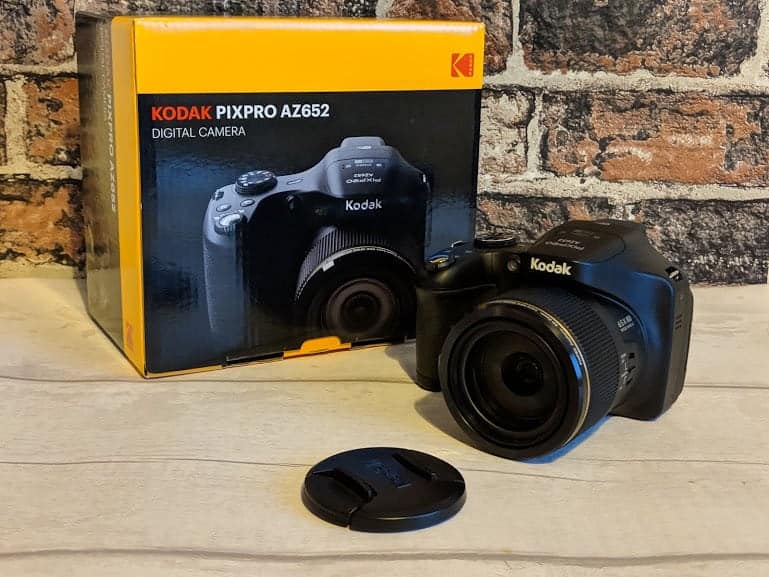
Would I recommend it?
I most definitely would! I absolutely love this camera and it is great for someone like me who doesn’t really want to jump to a DSLR with all the expense and complications of interchangeable lenses.
If you think you want something with a bit more oomph to it than a basic compact camera within a reasonable budget then maybe this is the one for you.
Pop over to check it out on Amazon and see if it fits what you are looking for.
Look how beautifully it captured my sister-in-law’s bouquet.

Top tips for choosing the best camera for you
Are you eager to capture life’s special moments but overwhelmed by the variety of cameras available? Choosing the best camera for beginners can feel like a daunting task, especially with so many options out there. Don’t worry; we’re here to guide you through the process with ease and a sprinkle of humour. Here is everything you need to know about camera types, essential photography gear, and how to choose a camera that fits your needs perfectly.
Understanding the Basics of Photography
Before we jump into selecting the right camera, let’s touch on some photography basics. Understanding these fundamentals will help you make a more informed decision. Photography is all about capturing light. Whether you’re photographing breathtaking landscapes or candid family moments, light is your best friend. The camera’s job is to capture that light and turn it into an image.
A camera consists of a few key parts. There’s the lens, which lets the light in, and the sensor, which captures the light. Then there’s the viewfinder or screen, where you can see what you’re about to photograph. Each of these components plays a vital role in how your photos will turn out. The goal is to find a balance that suits your photography style and needs.
It’s important not to be intimidated by technical jargon. Terms like aperture, shutter speed, and ISO might sound complicated, but they’re just ways to control the light entering your camera. With practice, you’ll get the hang of them. Remember, every professional photographer started as a beginner, just like you.
Types of Cameras for Beginners
Now that you’ve got a grasp on the basics, let’s talk about the different types of cameras available. There are several options, each with its pros and cons. Understanding these will help you determine the best camera for beginners like yourself.
First up, compact cameras, often called point-and-shoot cameras, are super user-friendly. They’re small, lightweight, and easy to carry around. You don’t have to worry about changing lenses or complex settings. They do all the thinking for you, making them perfect for casual snapping.
Next, we have DSLR cameras, which stand for Digital Single-Lens Reflex. These are bulkier than compact cameras but offer much more control. DSLRs allow you to change lenses, giving you the flexibility to capture a wide range of scenes. They’re great if you’re serious about learning photography and want room to grow.
Then there’s the mirrorless camera, a relative newcomer. Mirrorless cameras combine the best of compact and DSLR features. They’re smaller than DSLRs but offer similar image quality and versatility. They’re a fantastic option if you want high-quality photos without the bulk of a DSLR.
Why Mirrorless Cameras are Gaining Popularity
Mirrorless cameras are making waves in the photography world, and for a good reason. They’re particularly appealing to beginners seeking the best camera for their needs. Let’s explore why these cameras are becoming the go-to choice for many budding photographers.
Firstly, mirrorless cameras are known for their compact size and lightweight design. Unlike DSLRs, they don’t have a mirror mechanism, which makes them more portable. This means you can carry them around comfortably, whether you’re on a hike or exploring a new city.
Another advantage of mirrorless cameras is their ability to deliver excellent image quality. They boast large sensors and advanced technology, ensuring your photos come out sharp and vibrant. Plus, they often have fast autofocus systems, allowing you to capture moving subjects with ease.
Lastly, mirrorless cameras offer a wide range of lenses, from wide-angle to telephoto. This versatility lets you experiment and find your unique photography style. Whether it’s stunning landscapes or close-up portraits, a mirrorless camera can handle it all.
The Role of Lenses in Photography
Lenses are an integral part of any camera, and understanding their role is crucial when choosing photography gear. Lenses come in various types, each designed for different purposes. Let’s break down the basics to help you make the right choice for your beginner camera setup. Unless of course you have a bridge camera like the Kodak Pixpro and you wont need lenses.
The most common lens type is the standard zoom lens. This versatile option covers a range of focal lengths, making it ideal for everyday use. It’s great for capturing family gatherings, travel shots, and everyday moments. If you’re unsure where to start, a standard zoom lens is a safe bet.
For those who enjoy capturing distant subjects, a telephoto lens is a must-have. These lenses bring faraway objects closer, making them perfect for wildlife and sports photography. While they can be bulkier, they offer unique opportunities that other lenses can’t.
If you’re drawn to landscapes or architecture, consider a wide-angle lens. These lenses have a broader field of view, allowing you to capture expansive scenes. They add drama and depth to your photos, making them a favourite among landscape enthusiasts.
Evaluating Your Photography Needs
To choose the best camera for beginners, it’s essential to evaluate your photography needs. Consider what you want to capture and how you plan to use your camera. Doing this will help narrow down your options and ensure you make the right choice.
Think about the type of photography that excites you. Are you into travel photography, documenting your adventures around the world? Or perhaps you enjoy capturing candid moments with friends and family. Identifying your interests will guide you towards the right camera type.
Consider your comfort level with technology. If you’re tech-savvy and eager to learn, a DSLR or mirrorless camera with manual controls might suit you well. On the other hand, if you prefer simplicity, a compact camera could be your perfect match.
Lastly, think about your budget. Cameras vary widely in price, so it’s important to set a budget that aligns with your goals. Remember, investing in a quality camera now can pay off in the long run as you grow as a photographer.
Balancing Budget and Quality
When choosing a camera, it’s crucial to balance your budget with the quality you’re seeking. Photography gear can range from affordable to extravagant, so finding the right balance is key. Let’s explore how to make sure you get the most value for your money.
Start by setting a realistic budget. Determine how much you’re willing to invest in your photography hobby. Consider not only the camera body but also essential accessories like memory cards, camera bags, and extra lenses if needed.
Research and compare different camera models within your budget range. Read reviews like mine above for the Kodak Pixpro and watch videos from reputable sources to get a sense of each camera’s pros and cons. Take note of features that matter most to you, such as image quality, ease of use, and durability.
Don’t be swayed solely by brand names. While popular brands have their merits, lesser-known brands often offer excellent cameras at competitive prices. Explore all your options to ensure you find the best camera for beginners without breaking the bank.
The Importance of Camera Accessories
In addition to the camera itself, accessories play a significant role in your photography experience. Investing in the right gear can enhance your creativity and make shooting more enjoyable. Here are some essential accessories to consider for your beginner camera setup.
First, a sturdy camera bag is a must-have. It protects your camera and lenses while keeping everything organized. Look for a bag with padded compartments and sufficient space for your gear and personal items.
A tripod is another valuable accessory, especially for capturing steady shots in low light or long exposures. Tripods come in various sizes and materials, so choose one that suits your shooting style and location.
Consider investing in extra batteries and memory cards. Running out of power or storage space is never fun, especially during a photoshoot. Having backups ensures you’re always ready to capture every moment.
Exploring Photography Styles
Photography is an art form with endless possibilities. Exploring different photography styles can spark your creativity and help you find your unique voice as a photographer. Let’s take a look at some popular styles you can try with your new camera whether that be the Kodak Pixpro or another camera.
Portrait photography focuses on capturing people and their personalities. Whether it’s a candid family portrait or a professional headshot, this style is all about connecting with your subjects and conveying their emotions.
Landscape photography celebrates the beauty of nature. From sweeping vistas to intricate details, landscapes offer a chance to capture the world around us. Experiment with different compositions and lighting to create stunning images.
Street photography is about documenting everyday life and the human experience. It’s all about capturing candid moments in urban environments. This style requires quick reflexes and a keen eye for detail, making it both challenging and rewarding.
Practising Photography Techniques
Once you’ve chosen your camera and accessories, it’s time to practice your photography skills. Learning and refining techniques will help you make the most of your gear. Here are some tips to get you started on your photography journey.
Take your camera everywhere you go. The more you shoot, the better you’ll become. Practice composition, lighting, and framing to improve your eye for detail. Don’t be afraid to experiment and try new things.
Join photography communities online or in person. Engaging with fellow photographers can provide valuable feedback and inspiration. Share your work and learn from others’ experiences to gain new perspectives.
Study the work of renowned photographers. Analyze their compositions and techniques to understand what makes their images stand out. This can help you develop your style and find your creative voice.
Resources for Learning Photography
As you continue your photography adventure, there are countless resources available to help you learn and grow. From online courses to books and workshops, these resources can enrich your understanding of photography.
Online platforms like YouTube and photography blogs offer tutorials on various topics, from basic camera settings to advanced editing techniques. Explore different channels and websites to find content that resonates with you.
Consider enrolling in photography courses or workshops. These provide structured learning and hands-on experience with expert guidance. Look for local workshops or virtual classes that fit your schedule and interests.
Books by renowned photographers and educators can offer in-depth insights into photography concepts and techniques. Check out titles from your local library or bookstore to expand your photography knowledge.
Other articles you might like
If you have enjoyed reading this Kodak Pixpro article then please do check out some of the following articles I think you will enjoy.
Choosing wall art for your home – top tips
How to take the perfect blog photos
